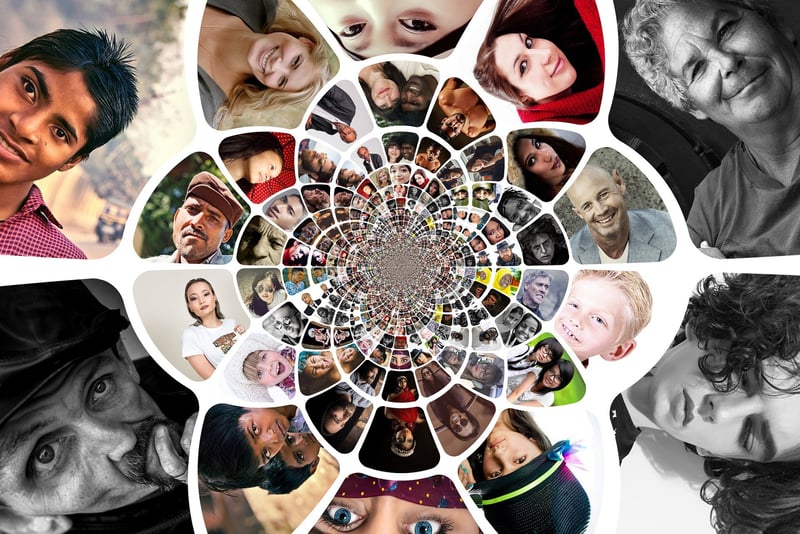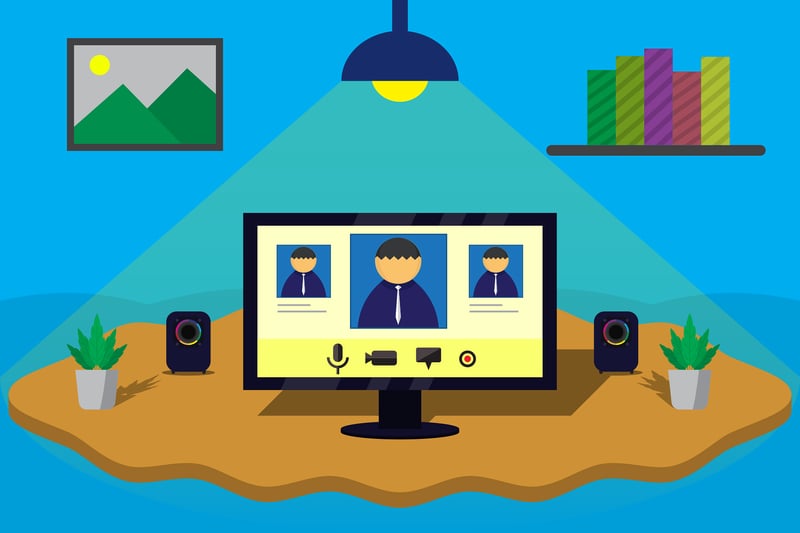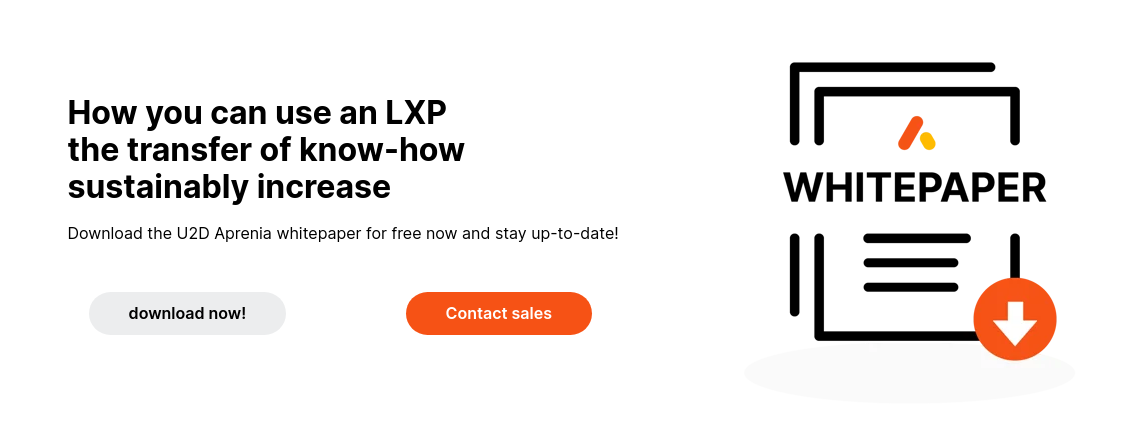LXP Aprenia – sustainable learning through generations
The world of work is constantly changing.Employers have to deal with the question of how to keep their company structures up to date. In this blog, you will learn what the generations and the LXPs have to do with it.

Working world in the past and today
In the very fewest cases, know-how is deliberately not transferred. Most of the time, if not almost always, it is the little things or sudden circumstances that later lead to major problems in knowledge transfer: a piece of information between doors, a sudden illness, a surprise dismissal or a collection of Post-Its at the workplace instead of structured and digital documentation for everyone. Of course, this can be immediately intervened with the counter-question "How did it work in the past?".
To cut a long story short: Yes, until a few years ago, the world of work worked without an LXP. But how? The working world of those days was much more rigid than today's: iron office structures, fixed hierarchies, hard working days, no work-life balance and exclusively top-down structures. Terms like "social learning" and "know-how transfer" were not yet established in society. If the whole thing is now viewed from the perspective of generational research, the parallels between the respective generation and the world of work quickly become apparent.
The focus here is on the baby boomers, Generation X (GenX), Generation Y (GenY) and Generation Z (GenZ).For the baby boomers, working life as such was in the foreground, which is why they were coined by terms such as "workaholic".(absolventa.de, n.d.).
Generation X stands out above all because of their professional ambitions:Getting ahead and advancing their career.In contrast to the boomers, work is no longer perceived as a central issue.It serves as a path to the goal - the pursuit of a high quality of life.The world of work and well-being are brought into harmony in the work-life balance.
The so-called Millenials (GenY) represent a milestone in the generational and working world. At the latest, they revolutionised work through their generational actions and perceptions. The work-life balance of the previous generation became work-life blending. In this case, the focus is on the merging of leisure time and the world of work (Weibler, 2018). The boundaries are no longer clearly defined, which creates a different perception of work.
Today, GenZ is in the public discourse. The youngest "work-ready" generation has grown up and been socialised almost completely digitised.The young people of this generation see the realisation of themselves in leisure - not in work. Working is almost seen as a critical part of life.It represents a livelihood again, but not anymore.With work-life balance again a priority for the GenZ, work is not taken home.
Each generation brings with it its own idiosyncrasies.Accordingly, our ideas about how we want to experience work have changed and are actively changing. For the younger generations, it is important that they feel comfortable. And this, in turn, includes the issue of how to organise the transfer of know-how. Just because this was designed and cultivated differently in the past does not mean that the way it was handled then is still possible with the generations working today. Both the Millenials and the GenZ - who have different views on the subject of work and leisure time - make greater demands on their employers than older generations. Therefore, it is indispensable to link the design of the know-how transfer to the idea of generations.
"Who does not go with the times, goes with the times" -Friedrich Schiller, o.D.
With these - in the truest sense of the word - dazzling words, the current state of the German economy can be well described. Gone are the days when employees had to adapt to employers. Employees have become increasingly aware that it is difficult to do business without them. In short: demands can be made. These demands are reflected in the way they work and in the knowledge they receive. On the one hand, team members want to be picked up, on the other hand, they also want to be involved in the company in order to actively shape the daily work routine.
Here, a connection to the "good old times" can be created. If employers promote and thus increase the initiative of their employees, they also increase the productivity of the company. This calculation has remained the same, it is just in a different time and generation spirit. For employers, HR managers and team members with personnel responsibility, it is therefore all the more important today to look into measures and possibilities that promote and strengthen initiative and commitment to knowledge management in the company.
In a nutshell: "How do I motivate the team members in my area of responsibility to internalise knowledge on their own, to establish workflows and processes and to pass on internal know-how and content?

Implement LXPs in the company
The need for companies to use an LXP for knowledge transfer is quickly put into perspective due to generational change and the associated change in the workweek. But how is it applied correctly? The concept of the Learning Experience Platform is still quite young. The idea of not only establishing knowledge through the top-down principle - as is the case with most LMSs - but also giving learners the function of teachers is only a few years old. But does this step alone help to ensure a qualitatively better exchange of knowledge or is it in the end just "empty words" in digital form?
In principle, it is like learning on the school bench, which as such also wants to be learned. Accordingly, conditions must be created so that the effectiveness of the LXP takes hold. All users - from team members to management - must understand and internalise the sustainability of this type of knowledge exchange so that the platform can achieve the optimal effect in the company. There are some external factors associated with the successful use of an LXP:
The first point is addressed directly to the users. The best tool has no impact if it is not actively used. This is especially true for interactive LXPs. There needs to be an awareness of this issue and continuity. Team members need to encourage each other to add content or set the right reminders. Holiday replacement is a good example of this. If the company uses an LXP, employees can transfer knowledge more easily. The answer to the question of how to handle this workflow within the holiday replacement is: "it should be stored in the LXP, have a look there! This practical example leads to the next point: content.
LXPs need content to function. An empty LXP is anything but a step in the right direction. Knowledge transfer can be described in terms of three separate aspects: knowledge acquisition, knowledge retention and knowledge dissemination. The implementation of external content providers or own content interfaces is therefore recommended as a "jump start". This way, content can be accessed in the LXP from day one.
Interaction affects the dynamics of the other two points. The quality of the content and the presence of the tool can only be achieved if the users also have the necessary willingness to interact. Especially team members from the younger generations - who will dominate the labour market more and more in the coming years - are influenced by interactive learning and "social networking" on the internet. Based on the findings of generational research, it therefore makes sense to focus on a design that encourages the employees of a company to interact on the LXP.
U2D Aprenia meets the best possible requirements
In summary, it should be emphasised that the generations, whether Millenial or GenZ, have high expectations of their employers. This sometimes leads to the need for sustainable quality in knowledge management and social learning. Young employees want to be actively involved in making their working environment as pleasant and productive as possible. The LXP U2D Aprenia provides the best prerequisites to enable a comfortable learning experience for the younger generations and at the same time encourage them to participate themselves. Optionally, existing content can be accessed right from the start. Digital interaction is important to the tech-savvy generations! This can be achieved through gamification at Aprenia. It provides an incentive for content creation and a certain degree of fun.

Bibliography:
Absolventa (n.d.). Generation XYZ - the complete generation overview. https://www.absolventa.de/karriereguide/berufseinsteiger-wissen/xyz-generationen-arbeitsmarkt-ueberblick
Weibler (2018). Work-Life-Blending - What does it mean and what does it entail? https://www.leadership-insiders.de/work-life-blending-was-heisst-das-und-was-bedeutet-es/
